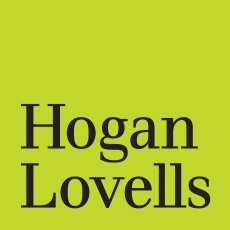Where a known compound in an invention is claimed to treat a disease (second medical use patents), must the patent prove that a compound cures the disease? If evidence is required at all, what evidence should the patent provide? This is known as plausibility. Novelty and inventive step are the requirements that are usually decisive for determining the patentability of an invention, yet sometimes the crux of the matter is found further upstream.
Patents cannot be granted for technical solutions that provide no technical contribution to the state of the art. While this is well known, its legal basis is not straightforward. Plausibility as such is not a requirement for patentability. Plausibility of second medical use inventions is also a hotly debated topic in jurisdictions outside Italy (eg, Warner-Lambert v Actavis (the so-called Lyrica case)). While only a few precedents are available in Italy, the issue is becoming increasingly more common in patent proceedings.
Plausibility is a known issue for the patentability of second medical use inventions at the European Patent Office (EPO). According to EPO Board of Appeals case law, an invention that is not plausible may either lack inventive step or be invalid due to insufficient disclosure. The leading case in this regard at the EPO level is AgrEvo, in which the board found that lack of plausibility of an invention may eventually result in a lack of technical contribution and therefore of inventive step. The EPO has also held that the lack of plausibility of an invention may be amenable to insufficient disclosure. In Warner-Lambert v Actavis, the UK Supreme Court noted that data from clinical trials may not be required at all. Accordingly, plausibility may be demonstrated using theoretical reasoning.
Few Italian precedents have considered the plausibility of a second medical use invention as a potential requirement for patent validity and a couple of earlier decisions do not provide satisfactory answers. In one of these precedents, a Turin court held that the plausibility of technical effect is not a requirement for patent validity; however, this was nothing more than a passing consideration in the overall reasoning. In another case, a Milan court found that technical effect must be supported by experimental data; however, that conclusion was based on the assessment of the court-appointed expert and the facts of that case. In any event, the Milan court did not state that the patent must contain data from clinical trials as would be required for the authorisation of a medicinal product.
However, Actavis v AstraZeneca could become the leading authority on plausibility in Italy. In this recent case, the court considered the plausibility of an invention that covered a formulation and method of administration of the active ingredient fulvestrant for use in the treatment of breast cancer by intramuscular administration. The patent claimed a therapeutically effective release had been obtained over a prolonged period.
Actavis argued that the patent was invalid due to lack of a sufficient description, as it contained no experimental data that supported the therapeutic efficacy. The court rejected this objection and observed that what is relevant, in principle, to assess the sufficiency of a description is whether a patent contains sufficient information for a skilled person to put the invention into practice.
The court noted that:
In general, to the purpose of the assessment of the sufficiency of the disclosure what matters is the evaluation of whether the conditions are met for the skilled [person] to be able to put the invention into practice. The inclusion of examples in the patent specification is not mandatory nor is it a requirement for the sufficiency of the disclosure the completion of a clinical trial at the date of the filing, as it is possible to rely on subsequent trials (decision T 433/05), provided that the effect was plausible at the date of filing.
The decision in Actavis v AstraZeneca has been welcomed by innovators as it clearly states for the first time and as a matter of principle that the plausibility of an invention does not need the support of experimental data; rather, credible information based on a sound scientific and technical rationale is sufficient. Contrary to its earlier fact-specific precedent, the court addressed the issue as a matter of law having reviewed EPO case law. The court also accepted that applicants may file later evidence to support a technical effect.
Other Italian IP courts are expected to apply this judgment, as it was rendered by a highly qualified panel of judges and one of the most reputed Italian courts in this area. The decision shows that the lack of plausibility of an invention could be challenged before an Italian court as a ground of invalidity for insufficient disclosure. Yet the patent need not contain clinical data to overcome the objection. In some instances, the information on the compound and/or the disease may be more than enough for a skilled person to understand that a therapy is effective as claimed.
This is good news for innovators, especially as the complexity of new products has increased the gap between the discovery of new compounds and the full understanding of their properties. Second medical use patents may be the first opportunity for inventors to take real advantage of innovations.
This article was first published by the International Law Office, a premium online legal update service for major companies and law firms worldwide. Register for a free subscription.



